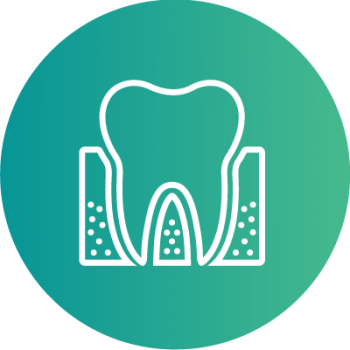
Prosthodontics
What is prosthodontics?
The specialty area of dental prosthodontics covers many different forms of prosthetic tooth replacements with which a dentist can fix both functional and aesthetic deficiencies inside a patient's oral cavity. Particularly important is an optimal wearing comfort for patients to help them with chewing without...
Read More All dentists with available appointment times are listed here. Super easy booking with just one click!
Featured Dentist
Csenge Oszkó
Dr.dent.
Insurances: Dentist of Choice , Private Practice
Clinic: Aventurin dental practice
Address:
Graben 31,Top 11
1010 Vienna
Featured for
- Tooth whitening and dental bleaching
- Dental implant
- Dental inlay
Featured for
-
Tooth whitening and dental bleaching
-
Dental implant
- Dental inlay
At the moment no entries are available
Back to top
Should a patient need dentures, a dentist may either prescribe a partial or a full denture, depending on how many teeth said patient still has in his or her mouth. Partial dentures are smaller and, therefore, easier to clean and should be taken out at least once per day to rinse any bacteria off of them. Dentures can be made out of plastic, metal, and ceramic.
Removable, permanent and implant-supported dental prosthodontics
As the name of this category already implies, it includes a large collection of tooth replacement options that can be used at different times and in different situation. Among removable tooth replacement options are partial and full dentures while permanent tooth replacement options include inlays, onlays, crowns, and bridges. Implant-supported options include, as the name suggests, dental implants. These listed tooth replacement options can be made either out of metal, ceramic material, or a combination of both and, in the case of ceramic-made tooth replacements in the visible part of the mouth (e.g., dental crowns and dental bridges), dentists nowadays use modern, computer-supported measurement options such as the so-called CadCam procedure to create optimally-fitting prothetic tooth replacements. In the case of large gaps in a patient's row of teeth, partial dentures are the best solution and a total denture is the best option for a completely toothless jaw.
Aesthetic and functional restoration
For teeth in the visible part of the mouth, not only a functional, but also an aesthetic type of tooth replacement is required. This is why the proper and careful manufacture of permanent tooth replacements is crucial not only for the optical attractiveness of a patient's smile, but also to ensure an optimal fit to prevent uncomfortable pressure points. Thereby, a dentist can fully restore his or her patient's ability to chew and can also allow for a comfortable return to everyday life.
Restoration of the jaw joint
Some patients suffer from jaw joint dysfunctions and can, therefore, not open their mouths as widely as they normally should be able to. To help these patients by equipping them with the optimal type of tooth replacement, dentists nowadays employ a digital scan procedure (replacing the more traditional tooth impressions) to ensure an ideal fit.
We hope that you found this primer helpful and invite you to review our blog as well as at the following landing pages for more information:
All the Best & see you soon, Ace!
Back to top
What is prosthodontics?
The specialty area of dental prosthodontics covers many different forms of prosthetic tooth replacements with which a dentist can fix both functional and aesthetic deficiencies inside a patient's oral cavity. Particularly important is an optimal wearing comfort for patients to help them with chewing without impediments or pain and to help them open and close their mouth. To achieve the best possible treatment results, a dentist nowadays works with a team of well-trained dental technicians and prevention specialists. This kind of teamwork enables the production of high-quality dental prosthetics that can remain functional for many years and that can seamlessly fit into a treated patient's row(s) of teeth.Which procedures fall into the area of dental prosthodontics?
The main function of prosthodontic treatments is to repair or replace missing and very heavily damaged teeth in an effort to completely restore a patient's chewing function. To achieve this goal, dentists have several forms of tooth replacements at their disposal among which they can choose depending on the number of teeth that need to be replaced. The most frequently utilized forms of tooth replacements are the following:How does a prosthodontic procedure?
As already mentioned, the fit and grip of a prosthetic tooth replacement is of the utmost importance to guarantee long-lasting treatment success. This is why a dental prosthetic intervention always starts with a detailed assessment of a patient's condition to enable constructive tooth replacement planning. During this phase, the dentist examines the composition of his or her patients' jaws based on x-ray pictures to determine the best tooth replacement option for each individual case. Afterwards, the dentist either takes impressions of a patient's teeth or uses modern digital scanners to measure and display the exact shape of the jaws and sends those pictures to a dental lab where the actual dental prosthetic is manufactured. Dental crowns, bridges, dentures, and other forms of tooth replacement are always unique and custom-made for individual patients.Should a patient need dentures, a dentist may either prescribe a partial or a full denture, depending on how many teeth said patient still has in his or her mouth. Partial dentures are smaller and, therefore, easier to clean and should be taken out at least once per day to rinse any bacteria off of them. Dentures can be made out of plastic, metal, and ceramic.
What are the most important specialty areas in dental prosthodontics?
Though the specialty of prosthodontics encompasses a wide range of procedures and treatment options, the most frequently performed ones fall into one of the following categories:Removable, permanent and implant-supported dental prosthodontics
As the name of this category already implies, it includes a large collection of tooth replacement options that can be used at different times and in different situation. Among removable tooth replacement options are partial and full dentures while permanent tooth replacement options include inlays, onlays, crowns, and bridges. Implant-supported options include, as the name suggests, dental implants. These listed tooth replacement options can be made either out of metal, ceramic material, or a combination of both and, in the case of ceramic-made tooth replacements in the visible part of the mouth (e.g., dental crowns and dental bridges), dentists nowadays use modern, computer-supported measurement options such as the so-called CadCam procedure to create optimally-fitting prothetic tooth replacements. In the case of large gaps in a patient's row of teeth, partial dentures are the best solution and a total denture is the best option for a completely toothless jaw.
Aesthetic and functional restoration
For teeth in the visible part of the mouth, not only a functional, but also an aesthetic type of tooth replacement is required. This is why the proper and careful manufacture of permanent tooth replacements is crucial not only for the optical attractiveness of a patient's smile, but also to ensure an optimal fit to prevent uncomfortable pressure points. Thereby, a dentist can fully restore his or her patient's ability to chew and can also allow for a comfortable return to everyday life.
Restoration of the jaw joint
Some patients suffer from jaw joint dysfunctions and can, therefore, not open their mouths as widely as they normally should be able to. To help these patients by equipping them with the optimal type of tooth replacement, dentists nowadays employ a digital scan procedure (replacing the more traditional tooth impressions) to ensure an ideal fit.
We hope that you found this primer helpful and invite you to review our blog as well as at the following landing pages for more information:
All the Best & see you soon, Ace!
